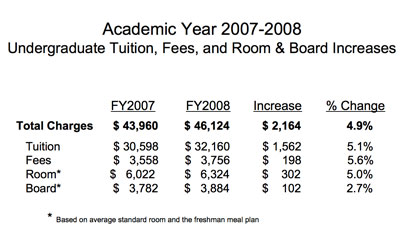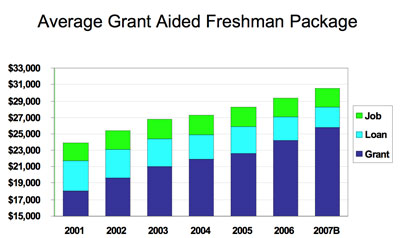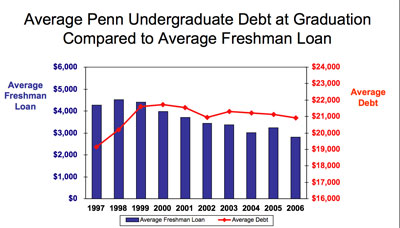| Trustees’ March 22 Stated Meeting Coverage |
|
March 27, 2007, Volume 53, No. 27
|
|
On Thursday, March 22, the Trustees’ Budget and Finance Committee as well as the Executive Committee met in Houston Hall’s Bodek Lounge for their spring meetings. President Amy Gutmann mentioned that Dr. Andrew Porter, GSE’s next dean (Almanac February 27) has already met with the faculty, staff and students in the school as well as the other deans at Penn since he is interested in expanding GSE’s collaborations. Dr. Gutmann also thanked Dr. Stanton Wortham for serving as interim dean until Dr. Porter’s appointment becomes effective on August 1. The President noted the “stellar honorary degree recipients” (Almanac March 13) who will be coming to Penn’s Commencement on May 14. She said that Penn Connects will launch this spring, as the University officially acquires the land, upon the completion of the real estate transaction with the U.S. Postal Service.
Provost Ron Daniels mentioned the new Center for Public Health Initiatives (Almanac February 20) that he was encouraged by Dr. Arthur Rubenstein to form. Provost Daniels also noted that the Fund for Innovation—a series of faculty-sponsored projects, steeped in research activity—that was launched in late January resulted in many nominations for projects. Eight projects have been selected to receive funding (see Awards for Innovation in International Offerings for Students).
EVP Craig Carnaroli announced that the endowment crossed the $6 billion mark as of January 31, 2007. He also mentioned that more than 1,400 staff have signed up for the new Human Resources-sponsored Penn Walking Program (Almanac February 27).
The financial report, given at the B&F meeting, showed that the total net assets for the consolidated University (academic and health system) increased nearly 11 percent since June 30, 2006 to over $8 billion. Net assets from operating activities increased $185 million and net assets from non-operating activities increased $614.1 million. The academic component’s net assets increased $550.3 million since June 30, 2006 led by investment gains, contributions, and tuition and fees. The health system component reported an increase in admissions and total unrestricted net assets of $736.6 million due to strong operating performance and investment performance and the recording of a non-recurring gain. Their overall unrestricted liquidity improved as days-cash-on-hand increased from 159.2 days to 177.8 days.
In Dr. Rubenstein’s Penn Medicine Report on the School’s recent Match Day—an event where the medical students find out where they have been accepted for their residency—he noted that 98% of the 156 students were matched with university programs; 44 will be staying at the Penn system, while 18 will go to Harvard. He also mentioned that there were more than 6,000 applications for the 150 slots in the incoming class.
Four resolutions were passed including the annual resolution to authorize tuition, fees and other charges for the upcoming academic year. Penn’s undergraduate tuition, fees, room and board will total $46,124 for 2007-2008, including tuition of $32,160, fees of $3,756, a standard room rate in the residence halls of $6,324 and a meal plan charge of $3,884. For graduate and professional students, tuition will be determined administratively to reflect the budget requirement of the various schools.
Other resolutions included: one to authorize an additional $2.9 million capital budget funding for the Scheie Eye Institute second floor clinical expansion and renovation at the Penn Presbyterian Medical Center; two others to authorize the renewal of leases for space to be occupied by the School of Medicine on Market Street—the department of radiology at 3600 Market and the department of clinical epidemiology and biostatistics at 3535 Market Street.



|